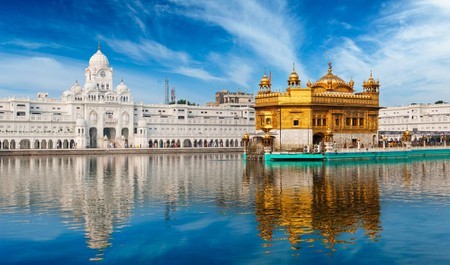
India. Massive, beautiful, multicultural, and steeped in exotic charm, the world's seventh-largest country has a wealth of history, spirituality, and natural wonders in store for travelers. India has so much to offer that it can be overwhelming, especially on your first visit. Not to worry - here are some top tips for traveling to India.
Meet the Entry Requirements
As with many countries, if you want to get into India in the first place, the odds are that you will need a visa. Luckily, most of the world can avoid the hassle of going to an embassy by applying online for an electronic visa or e-Visa for India. Nationals of 169 different countries are eligible.
Check here to see if you are able to get an India e-Visa.
This time-saving system is straightforward and lets you submit an application for a visa from the comfort of your own home. Once you have it, the India e-Visa is digitally linked to your passport. Simply print off a copy and you will be able to spend up to 90 days in the country.
Don't Try to Do Too Much
India is a truly huge country and it can be tempting to try and see as much as possible. However, you need to take some time in your schedule to relax. With bustling cities to navigate, vast distances to cover between destinations and so many sights to see, if you try to do India in one go, you will likely suffer from burnout and fatigue.
The best advice would be to choose one or two parts of the country that really interest you and take your time exploring each one, allowing yourself time to decompress. The Golden Triangle of Delhi, Jaipur, and Agra, including the iconic Taj Mahal, is a classic route to follow and highly rewarding.
Dress Modestly
India is a fairly conservative country and although it can be very hot, this is not the place to walk around in a mini skirt or low-cut top. Try lightweight long trousers, shirts or blouses, and maybe a shawl or sarong. This is particularly important when visiting temples or other religious sites, as more revealing clothing would be considered disrespectful. At these locations, you might also be asked to remove your shoes before entering.
Learn How to Haggle
Haggling is part of the everyday shopping experience in India. When it comes to the price of goods - especially at markets - vendors always start high, expecting customers to make a lower counter-offer. This can come as a bit of a culture shock for travelers from countries where haggling is not the norm, but rest assured that in India it is not considered rude; it is expected.
Moreover, tourists who do not haggle will end up paying more than necessary for everything they buy. Remember: in India, the price is always negotiable. If a vendor refuses to budge on a price, thank them and walk away. They will most likely change their mind and lower the price to bring you back to their stall, rather than lose your business.
Get a Local or International SIM
Having a useable phone while on the go in India makes a visit much easier from the start. This is especially true if you plan to travel around the country and see different places. Access to Google Maps, travel reviews, and weather information wherever and whenever you are helps hugely with planning.
Beware of Scams
As in many countries, India is not without the odd few locals looking to scam newly-arrived foreigners. The trick is to know what to expect. For example, a common scam run by taxi drivers is to tell you that they have never heard of your hotel, that it has closed down, or doesn't exist. They will try to take you to another hotel, which will be paying them to bring in business. If you know the exact address of your hotel and the phone number, you will be able to avoid this scenario easily.
Further sound advice would be to book tours and trips through companies recognized by the Indian Ministry of Tourism. There are a number of fake tour companies that will try to get your money by offering good deals. Only book through companies you know you can trust.
Prepare for Delhi-Belly
One common experience of visiting India that many travelers from other parts of the world encounter is the phenomenon dubbed "Delhi belly". The fact is that most visitors will not be used to the variety of different bacteria in the food and water in the country, regardless of how well-cooked the meals you eat are.
It is well worth bringing tablets for traveler's diarrhea with you so that you don't find yourself looking for a pharmacy when you'd rather stay close to the toilet. That said, pharmacies in India are typically cheap, with friendly, helpful staff, and since English is widely-spoken, communication is not an issue.
Enjoy the Food
Indian food is a favorite of many people from around the world. It is known for being rich, with lots of herbs and spices. Luckily for visitors who are not a fan of curry, Indian cuisine is much more diverse than many people think - in fact, most Indians themselves are actually vegetarian!
Vegetarian options might not be such a bad idea for visitors. Besides being diverse, fresh, healthy, and tasty, it also reduces the risk of becoming ill from eating meat that has been badly prepared.
Whichever option you go for, be sure to try something new and enjoy the rich aromas and flavors of authentic Indian food.
This article is copyrighted by Travelers Today, the travel news leader



